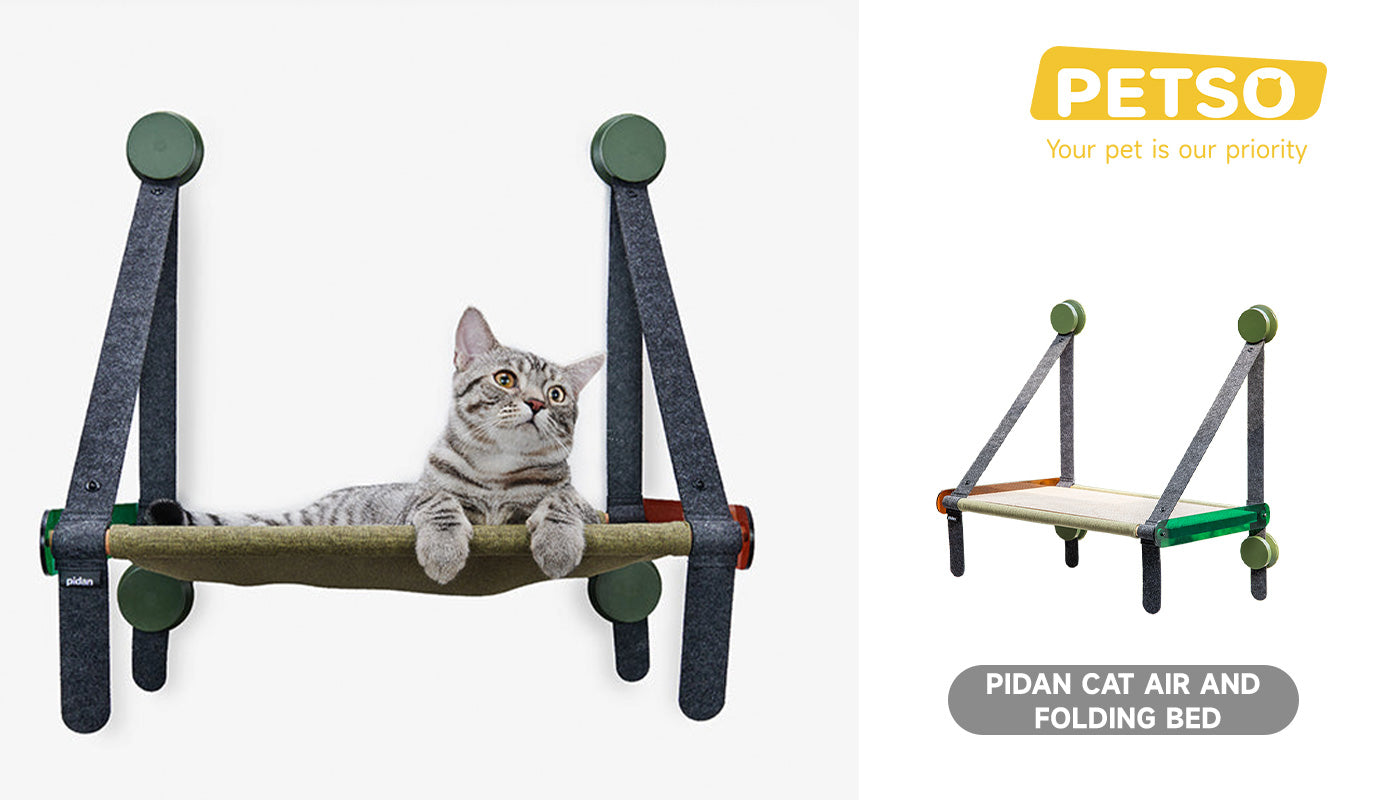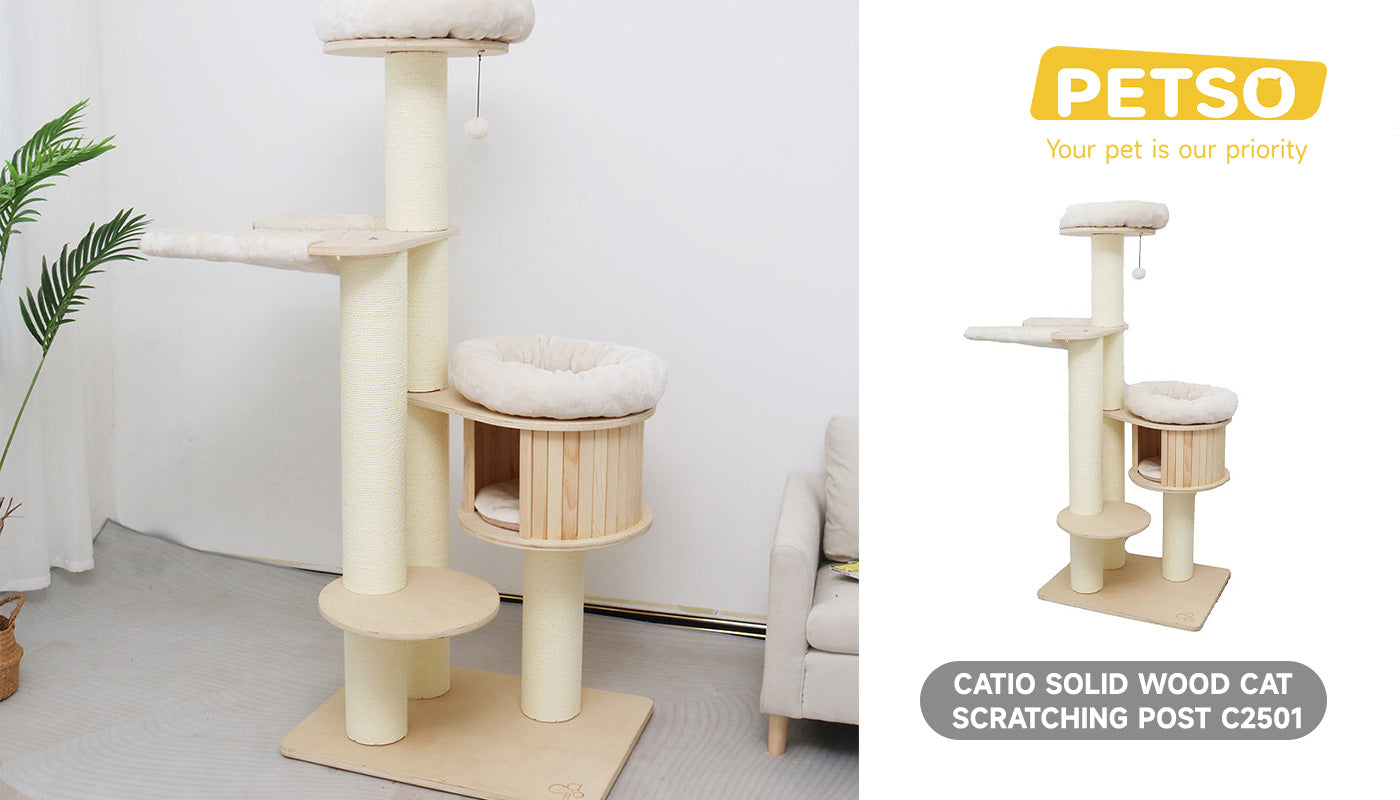
Space planning for apartment cats
Share
In the last few years, it has become more and more popular to keep pets. Whether you live alone or are a young couple, having a cat can add much fun to your life. Even if you are alone at home, you will not feel lonely or bored.
However, is it really suitable to keep a cat in a crowded place like a small apartment? Are you a cat lover who lives in a small apartment? Do you worry about providing a comfortable and safe home for your feline friend? Look no further! We have gathered three crucial tips from the American Society for the Prevention of Cruelty to Animals (SPCA) to help you create the perfect apartment for your cat. From creating a vertical world for your cat to designing a cat haven, our tips offer creative and effective solutions for small-space living.
What kind of living space do cats need?
Based on the wild nature of feline hunting, is the bigger the space for keeping cats, the better? According to the American Society for the Prevention of Cruelty to Animals (SPCA) survey and research on cat behaviour, the minimum living space that cats can afford cannot be less than 1.67 square metres, which is actually equivalent to 0.5 square metres! Many people feel that the space is too small for cats, making them feel suffocated and unhappy. But the truth is that it’s not because the space is too small that cats can’t survive, but because there are enough vertical elements in the space. This also explains why cats like to climb up and down.
The first trick to create a space for raising cats
It is of vital importance for cats to be able to see the outdoors. Cats are naturally curious and inquisitive animals who love exploration and adventure. Being able to see the outdoors provides them with a sense of stimulation and excitement that is crucial to their overall well-being. It allows them to engage with their environment, observe wildlife, and exercise their hunting skills. What’s more, exposure to natural light helps control their natural sleeping circle and contributes to healthy sleep patterns. Therefore, it is highly recommended to provide cats with access to outdoor spaces or at least a window view to fulfil their inborn need for exploration and stimulation. Although the living space is small, a free mind cannot be imprisoned by space!
But there is one more thing that cannot be ignored, which is to remember to secure the external window so that cats can not open it and go out shopping.
The second trick to create a space for cats
Cats don't care about the size of the space, but rather about the sense of hierarchy in the space. What this means is that cats are more interested in having access to vertical space than in having a lot of horizontal space to roam around in. In addition to satisfying cats' desire to jump up and down, cats need to have a certain level of control over their living environment, and the best way to do this is to be able to see all the big and small things in their living environment from above. By doing so, they can survey their territory, keep an eye out for potential dangers, and feel more secure in their surroundings. Having a bird's eye view of their domain can also help reduce stress and anxiety, which is crucial for their overall well-being.
This can be done through placed cat jumping platforms, increased hiding space or clearing out closets and bookcases. As a result, cats can let themselves enjoy the space. Understanding their unique needs and preferences is essential, but special care should be taken as well, such as not placing fragile objects near these places.
The third tip on creating a space for cats
Many cat owners tend to put all the facilities together for their cats, believing that it makes managing their cats easier and reduces the space occupied. They often put litter boxes, food bowls, and cat toys in one corner, assuming that it is convenient for the cats to have all their essentials in one place. However, doing so can actually cause some problems, such as cats toileting everywhere and not liking to eat or drink.
To avoid such situations, it is essential to consider the placement of litter boxes, food bowls, and cat toys. For instance, placing a litter box in a breezy room that is not muggy and protected from direct sunlight is crucial. Because cats have a strong sense of smell, and an unclean litter box can make them anxious and refuse to use it. In the same way, food and water bowls should be kept away from the litter box, as cats do not like to eat or drink near their toileting area.
More tips on cat's sleep time and rest environment
Cat Sleeping and Resting Habits: Cats need 12-16 hours of sleep daily due to their nature. They prefer quiet, high spots for rest.
Comfortable Resting Areas: Provide cosy beds or soft blankets in quiet areas, along with raised spots like cat trees. Keep temperatures between 20-25°C (68-77°F).
Design and Construction: Use soft but more resistant materials for resting areas and ensure stability of high spots. Avoid noisy or uncomfortable materials.
Environmental Dynamics: Consider noise levels and other inconveniences in the apartment environment. Create calm, undisturbed spaces for cats to rest happily.
By improving these factors, cat owners can make their apartment layout to meet their furry friends' sleeping and resting needs effectively.
How many of the above three points do you meet at your home? Hurry up and check whether your home environment is suitable for cats or not! Don't wait any longer to give your cat the home it deserves!



